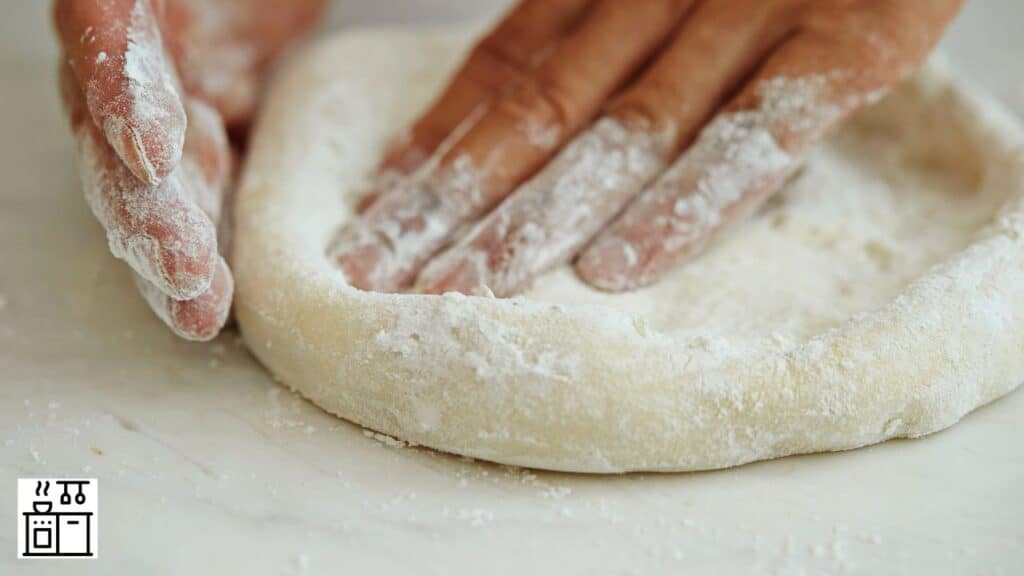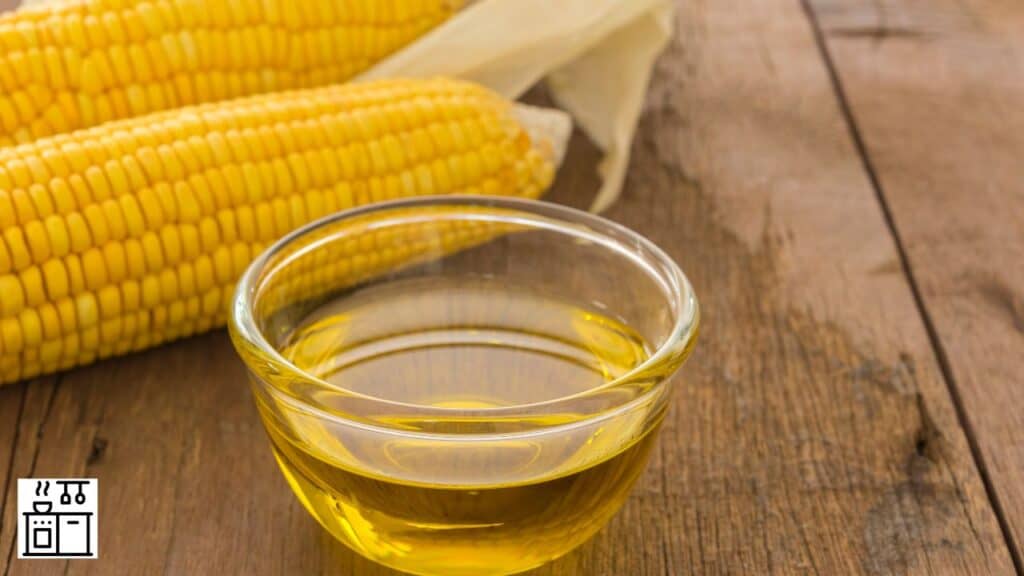Corn oil is widely preferred for cooking because of its neutral taste, high smoking point, and affordable price.
Now, many oils used for stovetop cooking are also good for baking. But can corn oil be used for baking?
Is Corn Oil Good for Baking?
Corn oil can be used for baking, and you can use it in most recipes that have oil in the ingredient list. Unlike strong-tasting oils like coconut oil or peanut oil, corn oil has a neutral flavor. So it will not impart strong flavors or affect the taste of baked goods.
Additionally, corn oil has a high smoke point and can be used for cooking or baking at high temperatures.
It’s also low in saturated fatty acids but has a high level of linoleic acid, which makes it healthier than other fats and oils used for baking.
10 Recipes in Which You Can Use Corn Oil for Baking
Many recipes for baked goods contain oil. In most cases, they don’t specify which type of oil.
You can use corn oil in the recommended quantity for all these recipes.
Here are some of the different things you can bake using corn oil.
1. Cake
Cake recipes will usually include butter as the fat. However, some of them replace butter with oil.
It’s usually because oil remains liquid at room temperature while butter solidifies.
Oil also results in a more even crumb compared to butter and other fats.
It seals the moisture in other ingredients and helps the cake stay moist.
When a cake recipe includes oil, you can usually use any type of neutral-tasting vegetable oil.
Corn oil is a good choice because it lacks a strong flavor.
It allows the flavors of the other ingredients to shine through.
2. Cupcakes
Cupcake recipes are like cake recipes. They usually use the same ingredients.
The only differences are in the equipment used for baking and the duration of baking.
Just like you can use corn oil to make cakes, you can use it in cupcakes too.
The amount of oil in each cupcake is quite small.
However, the flavor of the oil can seep in and affect the final taste. So it’s best to avoid strong-tasting oils.
Corn oil doesn’t cause such issues because it’s neutral-tasting.
It merely acts as a binding and softening agent for the cake batter.
It doesn’t overpower the rest of the ingredients and allows their characteristic flavors to shine through.
3. Muffin
Muffin recipes usually include some type of oil. You can usually use any type of vegetable oil in these recipes.
However, it’s wise to avoid strongly-flavored oils since they can affect the taste.
You can use corn oil for muffins because they add moisture to the batter and make it soft and moist.
Additionally, corn oil doesn’t affect the original flavor of the ingredients in the muffin batter.
So the flavors of the main ingredients will not be masked or altered.
4. Cookies
Corn oil is used for cooking and in salad dressings. However, it also works well in baked goods like cookies.
You can use corn oil interchangeably with vegetable oil in recipes for cookies.
In cookie recipes that use butter, replace the butter with corn oil.
However, the replacement shouldn’t be in a 1:1 ratio.
Corn oil is runnier, and this texture will affect the texture of the cookies.
So you will need less amount of oil than butter.
If the recipe calls for 1 cup of butter, use half a cup of corn oil instead. However, this is just a general assumption.
You should ideally look at how the dough comes together and accordingly increase or decrease the amount of corn oil.
5. Biscuits
Biscuit recipes use fats for softening and binding the dough.
Most biscuit recipes use butter since it improves the taste and flavor.
However, you can also use corn oil in some biscuit recipes.
Old-fashioned biscuit recipes usually use oil instead of butter.
Oil will be added and mixed with wet ingredients like milk or buttermilk to bring the dough together.
When replacing butter with corn oil in biscuit recipes, a good rule of thumb is to use ¾ cup of oil instead of 1 cup of butter.
Furthermore, pay attention to the dough texture to decide if you should add more oil or less to achieve the desired results.
6. Pizza Dough

If you like your pizza crust to be buttery and flaky, use corn oil instead of butter or olive oil in your dough recipe.
Corn oil is runnier and lighter than butter and olive oil. So the pizza will not be soft and fluffy.
You can use the same amount of corn oil as butter in the recipe and use it interchangeably with butter or olive oil.
Pizza dough made with corn oil is stretchy and perfect for deep pan and thin crust bases.
It doesn’t add any discernible flavor to the dough, and except for the texture, there would be no change in the pizza crust.
Related Reading: Can You Knead Dough With A Hand Mixer?
7. Bread
Most bread recipes use oil. Corn oil is an excellent choice for these recipes.
Using oil instead of butter or fat generally tends to extend the shelf-life of baked goods.
This is particularly true for bread.
Bread made with butter usually dries when you leave it out on the counter for a day or two.
However, using corn oil in the recipe prevents drying.
The flavor and texture of the bread improve on the day after baking, and this makes it taste better.
So, you can use corn oil in bread recipes to create longer-lasting and tastier bread.
Apart from plain grain-based loaves of bread, you can also use corn oil to make fruit bread and other types of flavored bread.
When making the substitution, replace ¾ of the melted butter in a recipe with oil for the right texture.
8. Pie Crust
Corn oil is a good dairy-free alternative ingredient for pie recipes.
To prepare a pie crust, you would have to blend butter with flour to make the base.
However, you can also make the base with oil instead of butter.
Using oil instead of butter will change the texture of the pie crust. Butter is fat, and hence it makes the crust flaky.
However, corn oil is lighter and runnier.
The dough will not rise as much since it doesn’t create any pockets of fat.
It will make the crust mealy and easily breakable. It will also be crumbly instead of flaky.
9. Brownies
Most brownie recipes use some type of oil.
Corn oil is a good choice because it creates a deliciously fudgy texture that distinguishes brownies from cakes and bread.
Some brownie recipes use butter.
In this case, the butter will aerate the batter, and the brownie will be light and cakey.
If you replace butter with corn oil in such recipes, the texture of the brownie will be different.
It will end up being fudgier and less cakey.
When using oil instead of butter in a brownie recipe, you can substitute it in a 1:1 ratio.
10. Tarts
Tarts usually have a pastry base with a jam, custard, or cream filling.
The recipe usually uses flour and butter for the base.
However, you can replace butter with corn oil since tarts aren’t expected to rise and be soft.
Using corn oil instead of butter in the tart base will make it crumbly. However, it will hold the shape properly.
Since corn oil doesn’t have a discernible flavor, it will allow the flavors of the filling to shine.
Tart bases with oil in them hold up better at room temperature and have a longer shelf-life than those made using butter.

